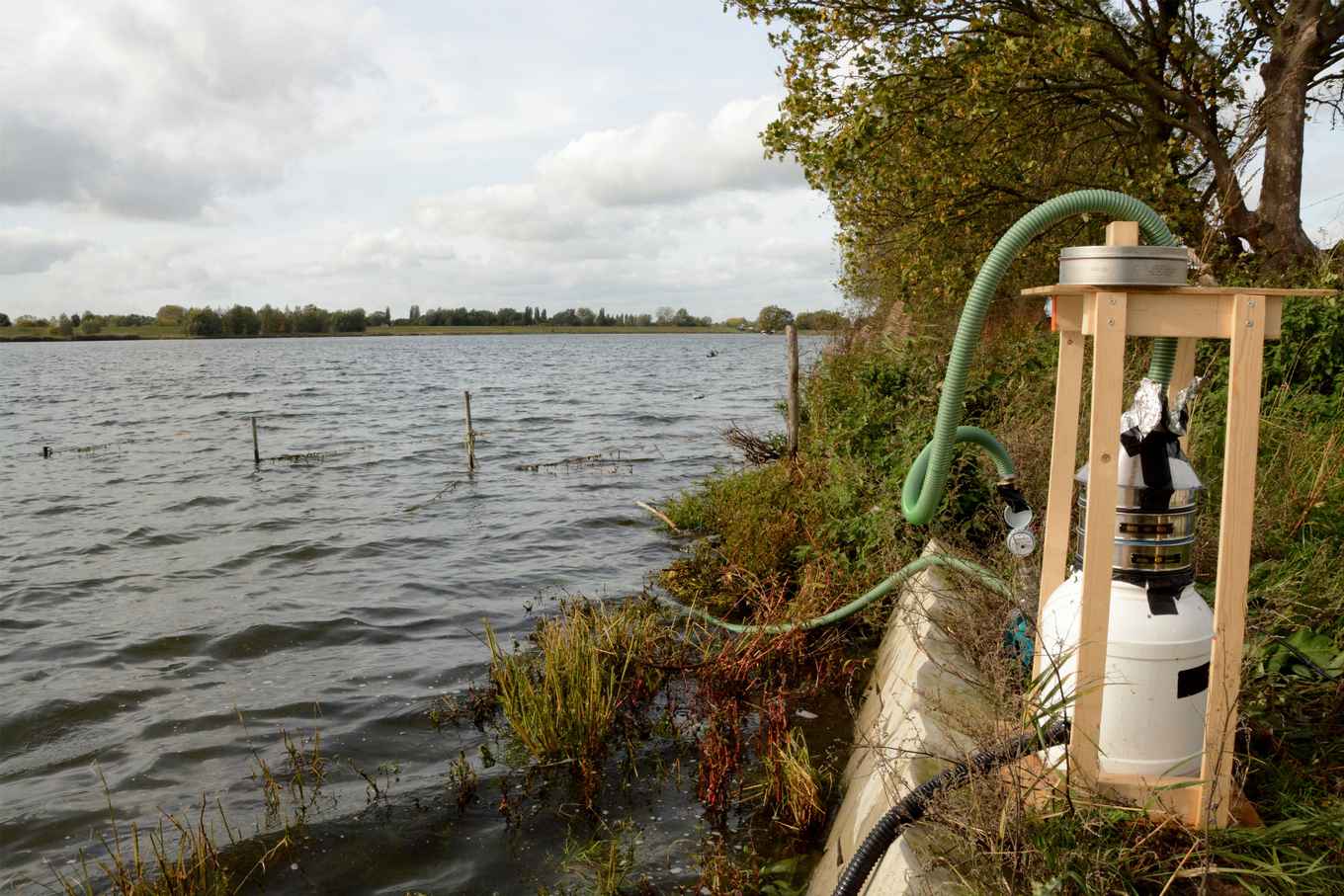26 types of microplastics and rubbers detected in Dutch rivers
25 March 2020

The majority of all microplastics in seas and oceans origin from rivers, where microplastics come together from different sources. Knowledge about those sources and the distribution of microplastics is important for water managers. Results from previous studies are not as reliable due to sample contamination, and often only larger particles were detected - now smaller microplastics have also been analysed.
‘It is difficult to find microplastics in water,’ says Svenja Mintenig, PhD candidate at Utrecht University and lead author of the research. The difficulty is due to, for example, plastic lab material polluting water samples. Due to the relatively low concentrations of microplastics in water, a lot of water is required for a reliable analysis: the researchers had to sample thousands of litres of water per sample and concentrate them to just one litre of water.
Small microplastic particles
The particles examined by the team are much smaller than ever measured. Previously, often only particles from 300 micrometres were measured, about the size of a dust mite and just visible to the naked eye. ‘Now we can even observe particles up to 20 micrometres - the size of a human skin cell,’ says Merel Kooi, PhD candidate at WUR and second author. By analysing the samples using a special microscope and new software, the researchers showed the presence of 26 different types of plastics and rubbers. And the smaller the particles, the more of them were present in the water.
The concentrations of microplastics that were found varied widely, but on average the researchers found about one particle per litre. There were usually more particles in the water near cities than in less populated areas.
Ecological consequences
At the moment, the concentrations are below the level at which undesirable ecological effects are expected. However, it is important to keep a close eye on those concentrations. ‘These are particles that do not just disappear. With unchanging or increasing plastic use, concentrations of microplastics in the environment will increase. Therefore, it may become a problem in the future,’ explains senior author Prof. Annemarie van Wezel from the UvA Institute for Biodiversity and Ecosystem Dynamics.
It remains unclear where exactly the microplastics come from. ‘Some microplastics definitely come from sewage treatment plants, but we could not establish a direct link between higher concentrations of microplastics in rivers and the treatment plants. So there are other, perhaps even more important, sources of microplastics in rivers,’ Mintenig says.
The research is part of the TRAMP project, partly funded by the NWO Open Technology Program, and partly by the Water Boards and various government bodies.
Publication details
Svenja M. Mintenig, Merel Kooi, M.W. Erich, Sebastian Primpke, Paula E. Redondo-Hasselerharm, Stefan C. Dekker, Albert A. Koelmans, Annemarie P. van Wezel: ‘A systems approach to understand microplastic occurrence and variability in Dutch riverine surface waters’, in Water Research (16 March 2020). Link: https://doi.org/10.1016/j.watres.2020.115723